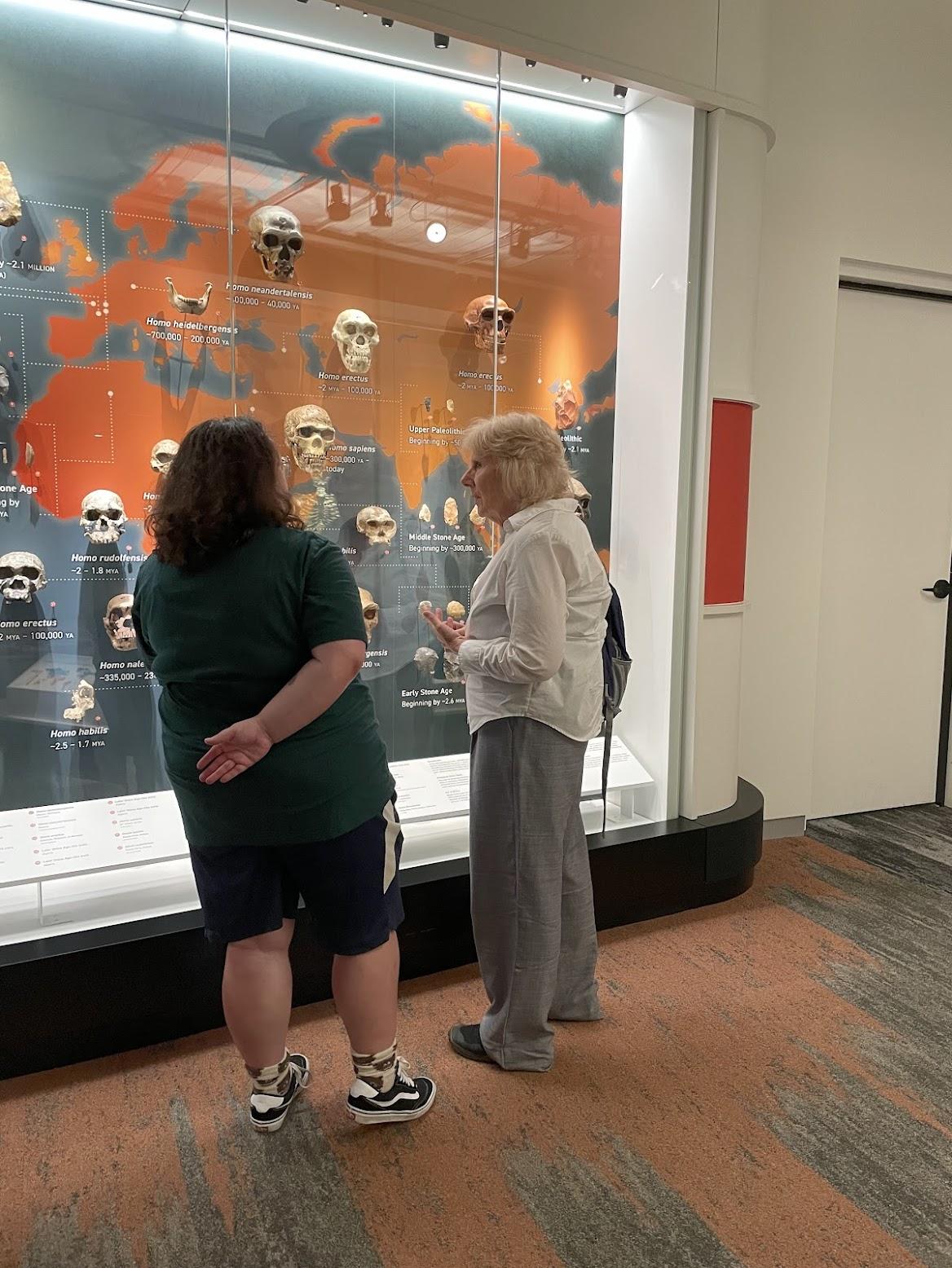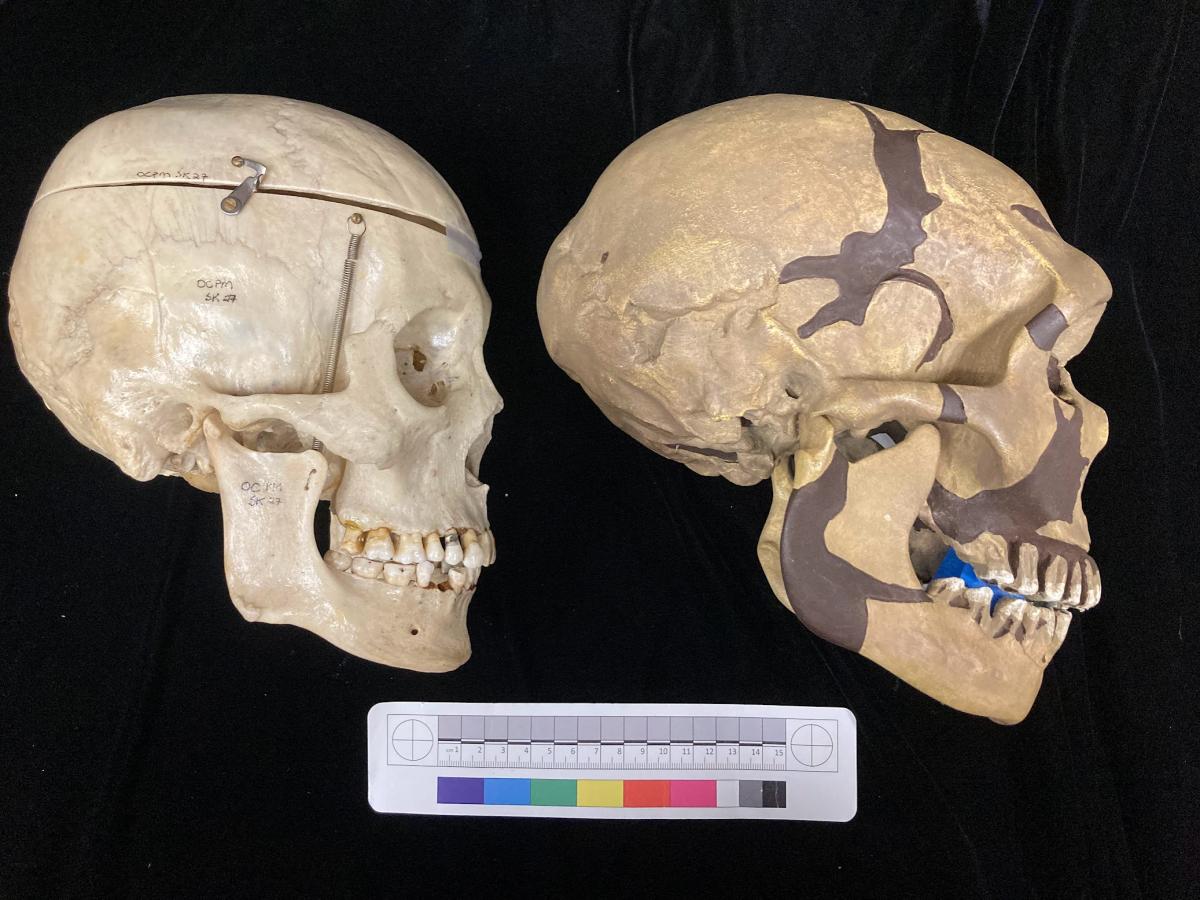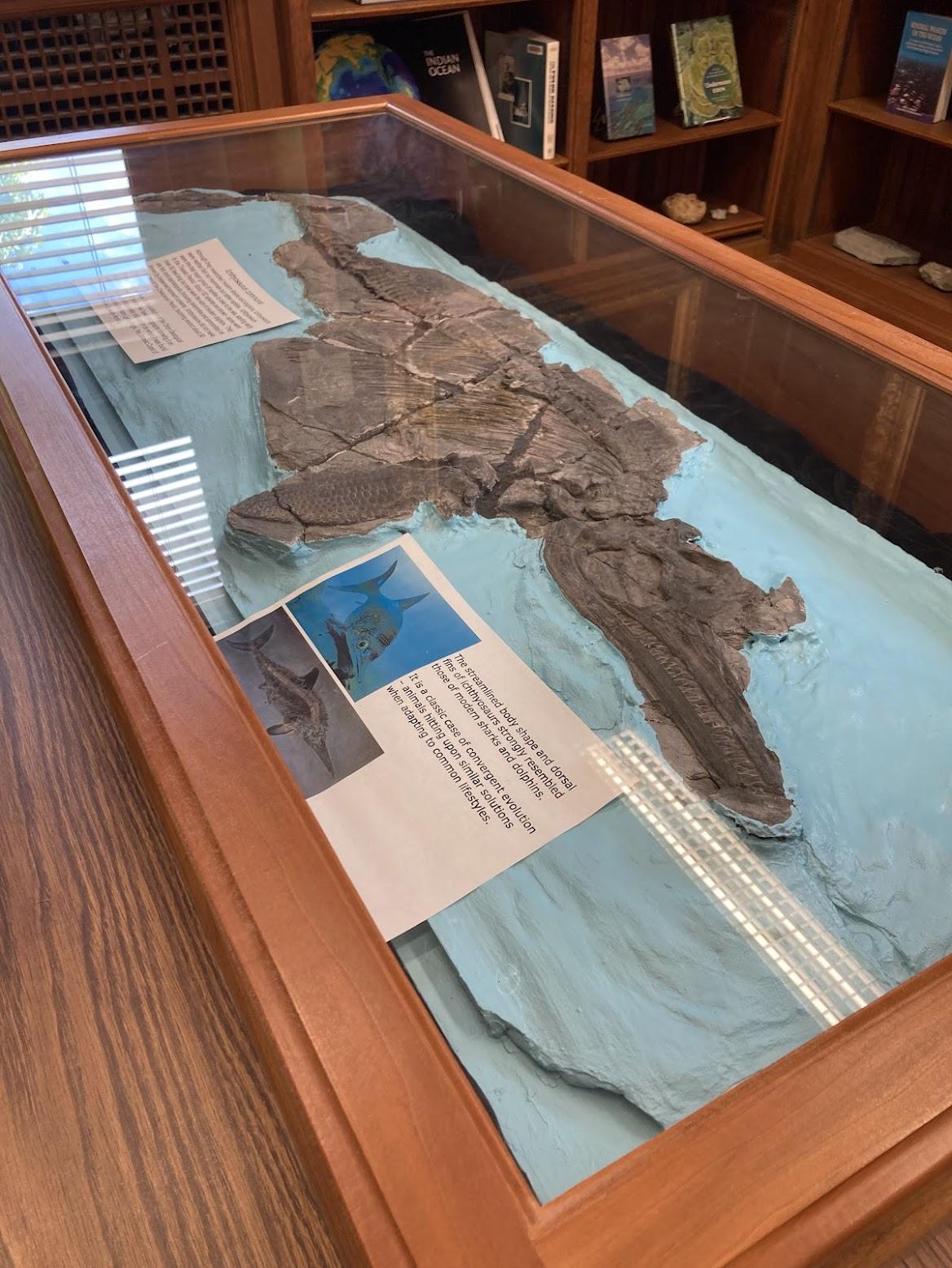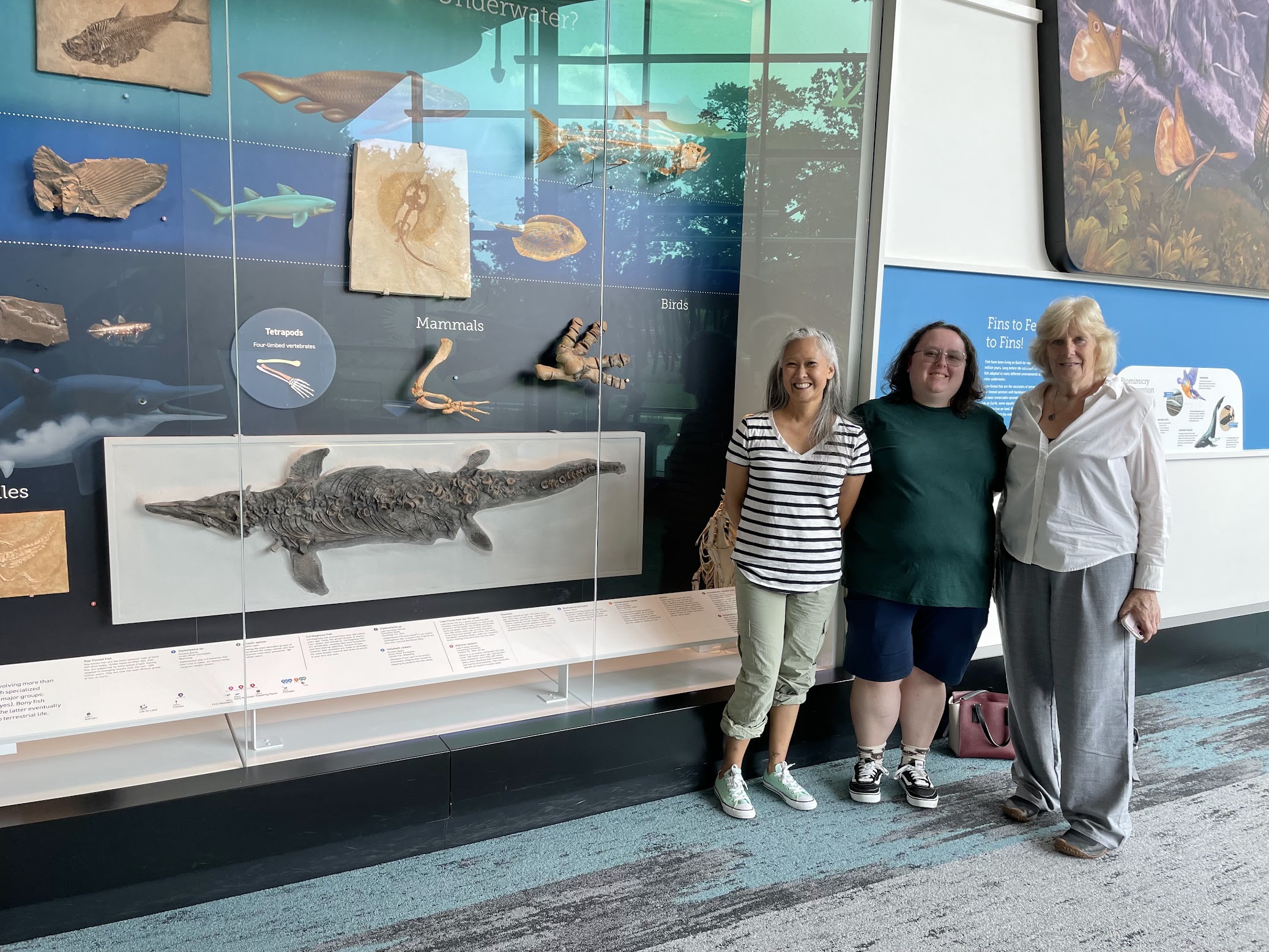Š├Š├╬ńę╣ą▀ą▀ė░į║├ŌĘč╣█┐┤ State senior Isabella Emerick has never been content with choosing just one path. As an major with a concentration in professional writing and a minor in , she has found a way to unite two fields that may seem worlds apart. This past summer, she explored the surprising intersections of science and literature through the Summer Undergraduate Research Experience (SURE) program.
The SURE program funds promising undergraduate researchers for eight weeks over the summer to engage in faculty-supervised research at Š├Š├╬ńę╣ą▀ą▀ė░į║├ŌĘč╣█┐┤ State.
ŌĆ£I want students to feel that there can be really interesting ways to combine different majors and fields,ŌĆØ Emerick said. ŌĆ£I liken it to mixing colors ŌĆō if we only had blue and yellow, we wouldnŌĆÖt know that green existed.ŌĆØ
Discovering Her Path
When Emerick arrived at Š├Š├╬ńę╣ą▀ą▀ė░į║├ŌĘč╣█┐┤ State, she began as a zoology major. After excelling in her first-year writing courses, her professors encouraged her to consider English.
ŌĆ£I just picked [zoology] because it was biology-related,ŌĆØ she said. ŌĆ£I did really well in my English courses, and I was like, ŌĆśIŌĆÖm going to go for it.ŌĆÖŌĆØ
Her passion for fossils and prehistoric life led her to pair her major with a paleontology minor.
ŌĆ£I had always loved dinosaurs, fossils and past life,ŌĆØ Emerick said. ŌĆ£I was always thinking about how I could use zoology and biology to study past forms of life ... I found the paleontology minor and switched to it the same semester I changed my major.ŌĆØ
These interests set the stage for her SURE project, which brought together science and storytelling.
Finding a Project and Mentors
Emerick first learned about SURE in 2024 but missed the application window. Determined to try again, she planned ahead for the next cycle. A chance meeting with Mahli Mechenbier, J.D., who was filling in to teach her professional editing course, proved pivotal.
ŌĆ£I went to her office hours [to go over an essay], and I asked if she happened to know anyone I could work with over [the] summer,ŌĆØ Emerick said. ŌĆ£She said, ŌĆśLet me talk to Dr. SpurlockŌĆÖ ŌĆō I didnŌĆÖt know at the time that they are really good friends.ŌĆØ

Mechenbier introduced her to Linda B. Spurlock, Ph.D., an anthropology professor whose expertise aligned with EmerickŌĆÖs interests. Together, they shaped a project examining how scientific knowledge informed three novels: ŌĆ£FrankensteinŌĆØ (1818) by Mary Shelley, ŌĆ£Remarkable CreaturesŌĆØ by Tracy Chevalier and ŌĆ£Clan of the Cave BearŌĆØ by Jean M. Auel.
Literature Meets Science
EmerickŌĆÖs role was to study the novels, compare themes and research the scientific discoveries that inspired them. She combed through peer-reviewed articles and even a 20th-century field report to deepen her analysis.
For ŌĆ£Frankenstein,ŌĆØ Emerick explored Enlightenment-era experiments with electricity and galvanism.
ŌĆ£There were public demonstrations where people would charge someone with electricity so they could ŌĆśzapŌĆÖ others,ŌĆØ Emerick said. ŌĆ£Mary Shelley definitely took inspiration from these displays that were going on before she was born and during her lifetime.ŌĆØ
ChevalierŌĆÖs historical fiction novel ŌĆ£Remarkable CreaturesŌĆØ is about the early days of paleontology and the life of Mary Anning, an early 19th-century fossil hunter from Lyme Regis, England. Emerick researched AnningŌĆÖs life and how it compared to the novel, as well as the geological history of the region.
ŌĆ£She lived in extreme poverty and sometimes risked her life looking for fossils,ŌĆØ Emerick said. ŌĆ£It was interesting finding actual letters written by Mary Anning and William Buckland, who was president of the Geological Society of London during her lifetime ŌĆō they definitely corresponded.ŌĆØ
Finally, AuelŌĆÖs ŌĆ£Clan of the Cave BearŌĆØ drew her into anthropological debates about Neanderthals. Inspired by Ralph SoleckiŌĆÖs 1971 field report ŌĆ£Shanidar, the first flower people,ŌĆØ based on excavations at Shanidar Cave in Iraq, the novel raises questions about interbreeding between Homo sapiens and Neanderthals. It also examines the medicinal knowledge of early humans.

ŌĆ£We have proof that Neanderthals did have an understanding of their environment [and used plants for healing],ŌĆØ Emerick said. ŌĆ£They werenŌĆÖt just animals that lived and died without taking precautions.ŌĆØ
Overcoming challenges
Emerick said one of the hardest parts of the project was finding and sorting through dense scientific material that supported her research goals.
ŌĆ£Finding works that were trustworthy and supported what I wanted to focus on was challenging,ŌĆØ she said. ŌĆ£It was rewarding to find works that supported main ideas and were digestible.ŌĆØ
The project also pushed her outside the classroom and helped her connect with professors and professionals, gaining a feeling of independence along the way.
She traveled to the Orton Geological Museum at Ohio State University to meet the museum curator and view an ichthyosaur specimen named ŌĆ£MaryŌĆØ after Mary Anning. She also visited the Cleveland Museum of Natural History, where she could compare fossils firsthand.

ŌĆ£I was nervous about the drive and about meeting this famous and renowned paleontologist,ŌĆØ Emerick said. ŌĆ£I want to thank him for allowing me to come down ŌĆō he was also kind enough to show me things they donŌĆÖt have on display, which was extremely rewarding.ŌĆØ
Emerick believes these experiences will prepare her for her future plans.
ŌĆ£ItŌĆÖs really taught me a lot about what it would be like in grad school, which is something I hope to be able to do ŌĆō working with professors on your own but also meeting them as a boss, in a sense,ŌĆØ Emerick said.
Building Connections
Emerick credits her success to the mentorship she received from both Mechenbier and Spurlock.
ŌĆ£I felt very grateful to be able to work with them,ŌĆØ she said. ŌĆ£It was a little bit intimidating at times because theyŌĆÖve been working in their fields longer than IŌĆÖve been alive, but it was a very rewarding experience.ŌĆØ
They also benefited from her work. While helping Emerick find images for her presentation poster, Spurlock rediscovered a Neanderthal femur stored in Š├Š├╬ńę╣ą▀ą▀ė░į║├ŌĘč╣█┐┤ StateŌĆÖs collections.
ŌĆ£I didnŌĆÖt even know we had that,ŌĆØ Spurlock said. ŌĆ£IŌĆÖm thrilled, because now I can show it to other classes.ŌĆØ
Emerick's work also inspired Mechenbier to revisit novels with a scientific lens.
ŌĆ£Isabella demonstrated an impressive amount of initiative throughout her research," Mechenbier said. "Her findings encouraged me to re-examine the story arcs in literature and assess how the scientific discoveries of those eras are reflected in the characters and their decisions.ŌĆØ
Looking ahead
Emerick is preparing to deliver her Three Minute Thesis (3MT) presentation in October, a requirement for SURE participants. She said condensing months of research into a brief, accessible talk has been one of her most valuable learning experiences.
The project also reinforced her interest in pursuing graduate school in anthropology, with dreams of working in a museum or academic setting.
ŌĆ£I want to get my masterŌĆÖs degree and Ph.D.,ŌĆØ she said. ŌĆ£I feel that this project will be a good way to prepare for any of the different routes I want to go with combining disciplines.ŌĆØ
Emerick hopes her journey will inspire other students to take advantage of opportunities like SURE.
ŌĆ£DonŌĆÖt be afraid to ask your professors if theyŌĆÖre doing the SURE program or if they have any open positions in their labs,ŌĆØ she said. ŌĆ£I know professors can seem scary sometimes, but theyŌĆÖre just as human as any of us.ŌĆØ
For Emerick, the project affirmed the value of crossing disciplines and embracing curiosity.
ŌĆ£Science and literature cannot exist without each other,ŌĆØ she said. ŌĆ£I think studying them together opens a lot of doors that we didnŌĆÖt even know were there.ŌĆØ
###
Media Contact:
Jim Maxwell, 330-672-8028, JMAXWEL2@kent.edu


